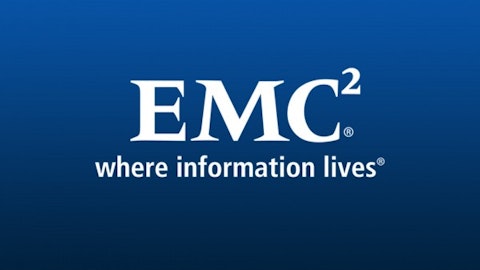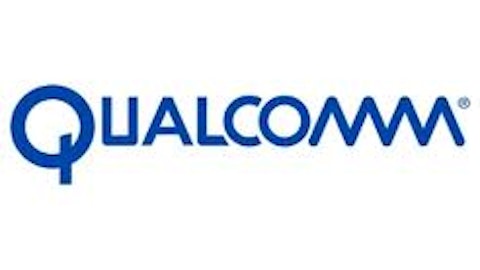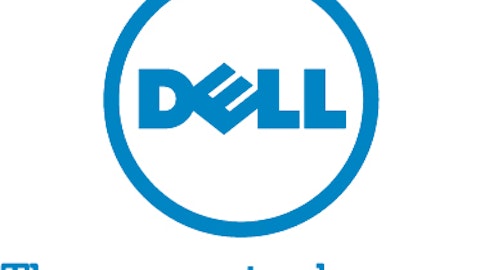Sometimes a stock appears to be cheap when in reality it’s expensive, and sometimes a stock appears to be expensive when in reality it’s cheap. The numbers which you choose to look at can have a significant impact on a stock’s valuation, and it’s important to cover all the bases in order to get a clear picture of the company’s financials.
Consider enterprise storage company NetApp Inc. (NASDAQ:NTAP). If you look at the GAAP EPS for fiscal 2013, which ended in April, the stock currently trades at about 28 times that value. But if you look at the free cash flow per share from fiscal 2013 the stock trades at just 13 times that value.
These numbers paint contrasting pictures of the stock’s valuation. Which one is more relevant? Well, there are a few things that need to be considered.
Don’t ignore the balance sheet
None of the ratios above take into account the balance sheet, which in NetApp Inc. (NASDAQ:NTAP)’s case contains a significant amount of cash. When a company has a net cash position it lowers the effective purchase price of the stock, since you’re buying not only the earnings power but also the cash. This has the effect of reducing the ratios above. If the opposite case were true and the company had a net debt position than the effective price would increase along with the ratios.
The most recent balance sheet shows that NetApp Inc. (NASDAQ:NTAP) has $6.95 billion in cash and cash equivalents and $2.25 billion in debt, leaving a net cash position of $4.7 billion. With a market cap of $14 billion this cash represents a full third of the total market value of the company. This drops all three ratios to two-thirds of their original values – 18.7 and 8.7 respectively.
Although this makes the stock looker cheaper across the board, it doesn’t clear up the discrepancy between the net income and the free cash flow. For this we’ll need to look at the cash flow statement.
The epidemic of stock-based compensation
If you simply take the operating cash flow and subtract the capital expenditures for fiscal 2013 you arrive at a free cash flow of $1.08 billion, nearly twice the net income. What accounts for this huge gap? A big factor is stock-based compensation given to company executives. In 2013 this item totaled $276 million, up 7% from 2012 even as net income declined.
Issuing stock-based compensation has the effect of diluting the share base, increasing the share count and reducing the ownership stake represented by a single share of stock. This is clearly a real cost, and GAAP net income takes that into account. But the free cash flow doesn’t, leading to an inflated value and a deceptively low P/FCF ratio. The company has been buying back shares, with $590 million spent in 2013, but a big fraction of this money goes to simply undoing the effects of stock-based compensation.
It seems to be a common practice, especially among tech companies, to pay out large amounts of stock-based compensation and then mask it with buybacks. These companies often tout non-GAAP figures which don’t subtract out these costs, but such numbers should not be considered on their own.
A better figure
Since the free cash flow can be deceptive I prefer to look at owner earnings. Owner earnings are a modification of the free cash flow which doesn’t include stock-based compensation or fluctuations of working capital, and for valuation purposes is a superior value. I’ll also add tax-adjusted interest, since I’ve already taken into account the debt. Owner earnings for 2013 come out to $609 million, slightly higher than the net income and far lower than the free cash flow. This puts the P/OE ratio, adjusting for the net cash, at 15.4.
The stock is not anywhere near as cheap as the free cash flow suggests, but it’s also not as expensive as the net income suggests. For a company which saw just 1.6% revenue growth and a decline in earnings in 2013 the price isn’t all that attractive. Analysts expect earnings growth of 13% annually over the next five years, and if that pans out then the stock is reasonably priced. But analysts are often wrong.
Other deceptive tech stocks
Competitor EMC Corporation (NYSE:EMC) shows the same large discrepancy between net income and free cash flow, partially due to $895 million in stock-based compensation which negates much of its buyback effort. While the company has spent a total of $5.1 billion on buybacks over the past 3 years, 10% of the current market capitalization, the diluted share count has actually increased. All that buyback money should be counted as an expense, thus greatly reducing the company’s profits. Just like in the case of NetApp Inc. (NASDAQ:NTAP), looking at just the free cash flow makes EMC Corporation (NYSE:EMC)’s stock seem much cheaper than it really is.
Another company with a history of substantial stock-based compensation is networking giant Cisco Systems, Inc. (NASDAQ:CSCO). Cisco Systems, Inc. (NASDAQ:CSCO) buys back a tremendous number of shares, and has been doing so for years, but stock-based compensation limits the impact of the buyback program. Compared to NetApp and EMC Corporation (NYSE:EMC) Cisco Systems, Inc. (NASDAQ:CSCO)’s stock-based compensation is fairly tame. In the last fiscal year Cisco Systems, Inc. (NASDAQ:CSCO)’s stock-based compensation represented 12% of the operating cash flow. This compares to NetApp Inc. (NASDAQ:NTAP)’s 20% and EMC Corporation (NYSE:EMC)’s 14%. NetApp is actually the worst offender based on this percentage. Even after excluding the stock-based compensation Cisco Systems, Inc. (NASDAQ:CSCO) is still fairly cheap, especially considering it has a mountain of cash on its balance sheet.
The bottom line
When you’re determining the valuation of a stock it’s important to look at it from all angles. Simply looking at the net income or the free cash flow isn’t enough, as both numbers can be skewed, and the balance sheet shouldn’t be forgotten. NetApp Inc. (NASDAQ:NTAP)’s buyback program is ineffective, basically completely canceled out by stock-based compensation, and not including that cost in your analysis will lead to inflated results. When a company touts non-GAAP figures they’re likely trying to get you to forget about stock-based compensation. Don’t let them succeed.
Timothy Green owns shares of Cisco. The Motley Fool recommends Cisco Systems (NASDAQ:CSCO). The Motley Fool owns shares of EMC. Timothy is a member of The Motley Fool Blog Network — entries represent the personal opinion of the blogger and are not formally edited.
The article Cover All The Bases When Valuing Stocks originally appeared on Fool.com is written by Timothy Green.
Copyright © 1995 – 2013 The Motley Fool, LLC. All rights reserved. The Motley Fool has a disclosure policy.





